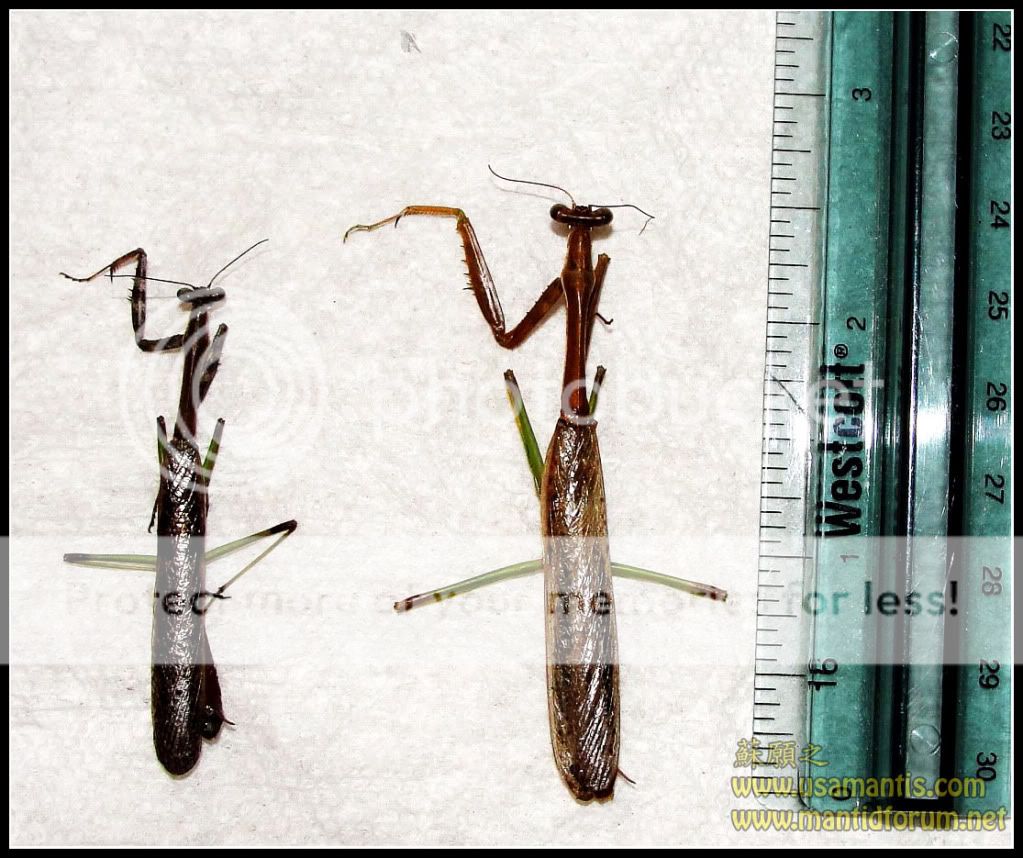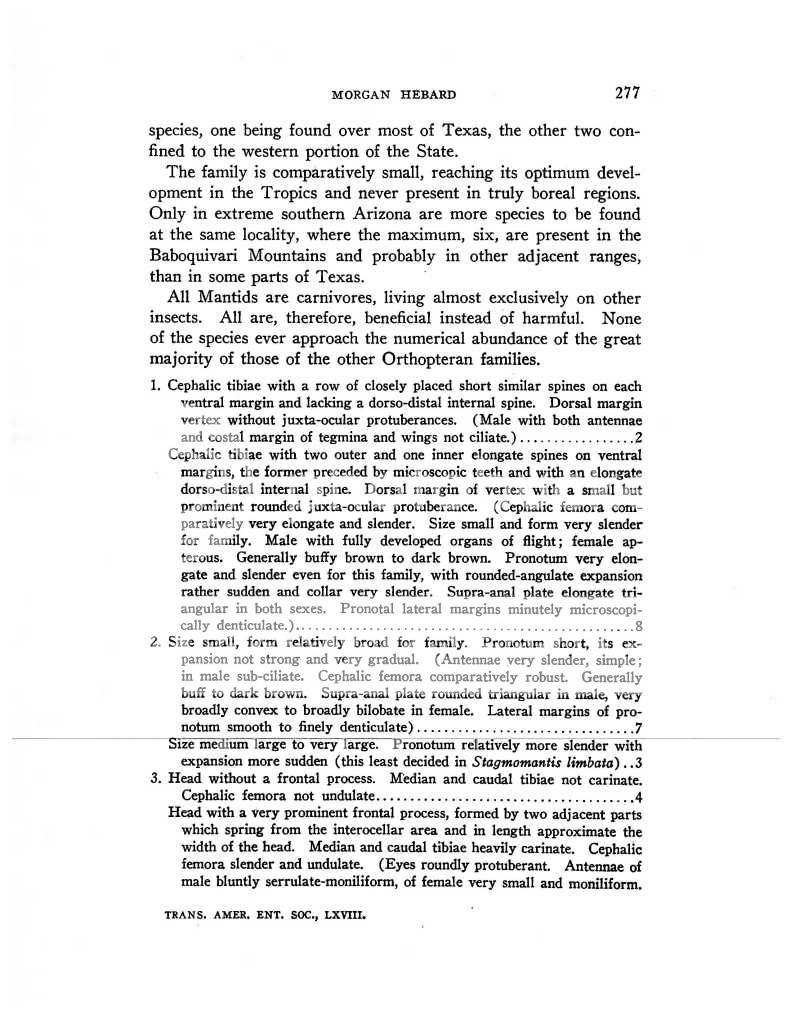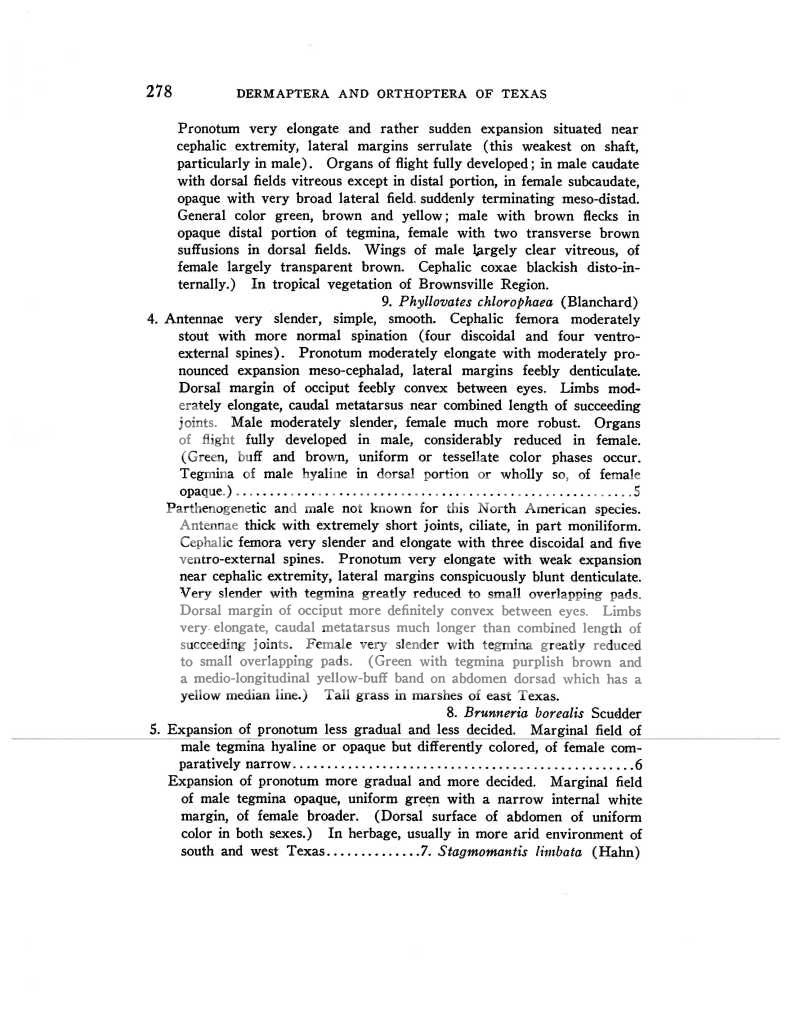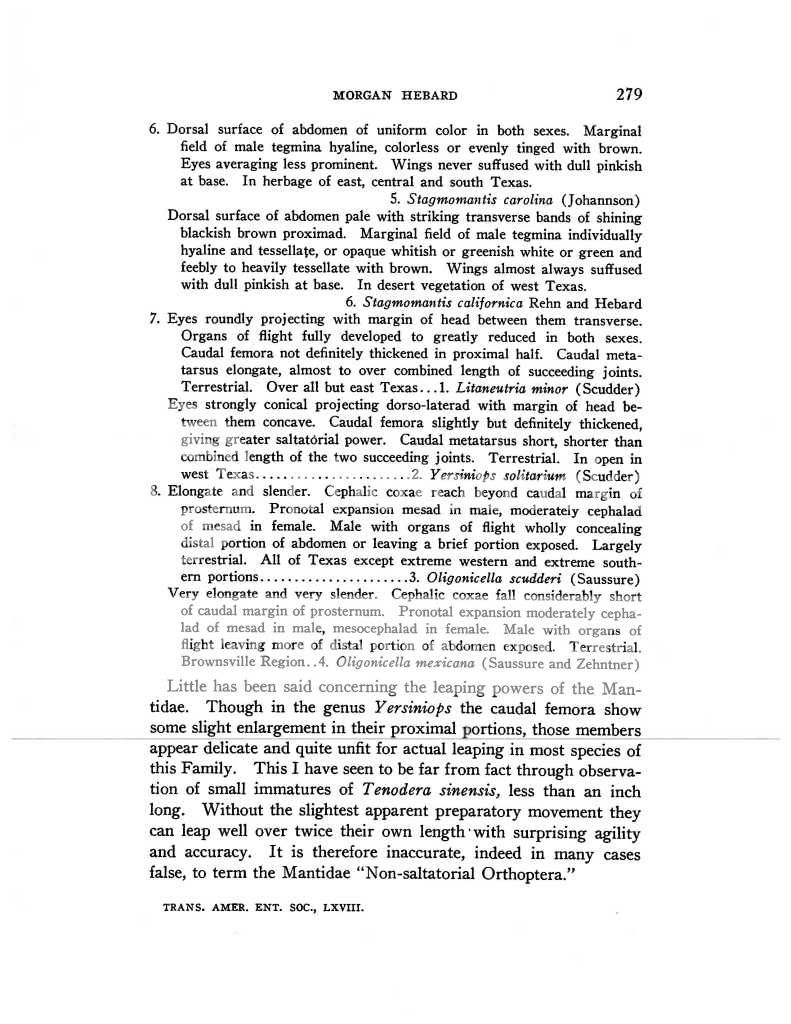Attached is a pic of two adult male mantis collected from two different location (see attached). Both were called Carolina mantis by people (not insect expert) where the mantis were collected. i have noticed the significant size difference (I do not pick up the extreme but they are pretty much about the same size). On average, the adult male Carolina mantis collected in Texas warm Southeastern area appear to be much larger than the adult male Carolina mantis from Missouri(MO). I wonder if shorter period of warm weather (thus shorter period of food availability) plays an important role in the mantis size for Carolina mantis. I mean the mantis in cooler area might want to grow into adult and breed sooner than the mantis in the south which enjoy longer period of warmer weather and additional food; Therefore smaller size, is this assumption sensible? i haven't had the time really looking at the details on the mantis yet like spreading the wing or checking the spike on tibia and femur, I will do that later. Just wonder if they could be different species all together? or could it be sub-species?








































